I do get that Train really was the way to get stuff and people around until not that long ago. This age we have now, where you can get information about tools, equipment, knowledge and even possible life partners (!) through a small monitor residing in your pocket, is very recent. I think that if we did rely a bit more on Trains to do mass transportation, for both people and commerce, the world would be a better place.
Some years ago I saw a snow machine at a museum, it was belt driven, and had supposedly been able to remove 3m deep snow from a mountain pass road, with no other tools or equipment. We are a bit spoiled by availability of machines today, I think we also may have lost some good 'ol ingenuity along the way.
Some years ago I saw a snow machine at a museum, it was belt driven, and had supposedly been able to remove 3m deep snow from a mountain pass road, with no other tools or equipment. We are a bit spoiled by availability of machines today, I think we also may have lost some good 'ol ingenuity along the way.
Some years back a local company made railroad snow blowers. They would mount a used past FAA hours JT10 jet engine in front to blow away the snow. As they ran low on them some got a JT15. The jet engines could do as much as a rated for flight metric ton of thrust. Fine for a small aircraft, tiny compared to a railroad locomotive.
A Brief History of Jet-Powered Snow Blowers — Jet Engines Used to Clear Snow
A Brief History of Jet-Powered Snow Blowers — Jet Engines Used to Clear Snow
Last edited:
...impression that that train snow blower has a diesel engine in the front unit...
Let's see the replay.
YouTube
At 0:09 (where I linked), the small white plume becomes a large white plume. At 0:15 there is a hint of grey. At 0:24 the plume is black.
A Diesel, warm, generally will not blow white. This white-to-black transition is exactly how a locomotive-type steam engine picks up on load. First you open the throttle and cutoff. Huge amounts of steam pass through the cylinders and shoot up the stack. This flow induces flow through fire and boiler tubes. But it takes a moment for the fire to perk-up, and some moments for the fumes to pass the length of the boiler tubes (this is not a small engine).
Between the snow and all the stuff on the nose it is difficult to identify the engine. Ah--- the rotary was retired 1964. The line now only runs in summer, and the stray snow cleared by Caterpillar. But they bring it out for a winter railfan show, Diesel pushed. In 2000 it was pushed by steamers 73 and 40 (2-8-2 Mikado, 2-8-0 Consolidation). That video is a 2011 run of same/similar complement.
I do suspect that the blower is not a road engine but a portable power plant, perhaps to drag the mines, adapted to rotary blowing. The smoke comes out too far back for a road engine, and the sides are more box-car than engine.
I was wrong. The WP&Y has many Diesels, including some unique ones. The steam is brought out only rarely for steam-fans.
EDIT -- wrong again. Both rotaries were bought new around 1900, apparently as rotary snow plows. They've had hard lives. Better picture.
Last edited:
Woke up to blue sky and -18c yesterday.
Here's a video of the view when I removed snow from the roof yesterday.
A bit tired today. My warmup session was removing snow from 3 garage roofs, then I got started on my house, then there was some aftermath because my front door was blocked. Nowhere else to put it, had to get it out of the way.
YouTube
Here's a video of the view when I removed snow from the roof yesterday.
A bit tired today. My warmup session was removing snow from 3 garage roofs, then I got started on my house, then there was some aftermath because my front door was blocked. Nowhere else to put it, had to get it out of the way.
YouTube
Attachments
-
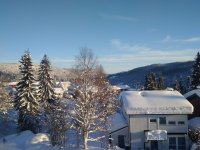 IMG_20180204_151325.jpg1,014.8 KB · Views: 110
IMG_20180204_151325.jpg1,014.8 KB · Views: 110 -
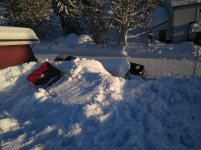 IMG_20180204_151332.jpg980 KB · Views: 108
IMG_20180204_151332.jpg980 KB · Views: 108 -
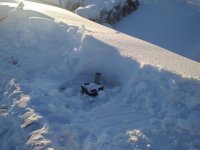 IMG_20180204_151340.jpg623.4 KB · Views: 111
IMG_20180204_151340.jpg623.4 KB · Views: 111 -
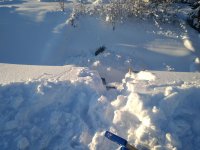 IMG_20180204_151356.jpg727.6 KB · Views: 103
IMG_20180204_151356.jpg727.6 KB · Views: 103 -
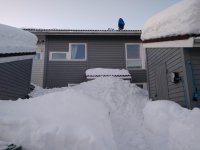 IMG_20180204_162110.jpg470.6 KB · Views: 54
IMG_20180204_162110.jpg470.6 KB · Views: 54 -
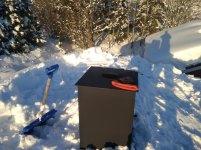 IMG_20180204_151405.jpg984.7 KB · Views: 50
IMG_20180204_151405.jpg984.7 KB · Views: 50 -
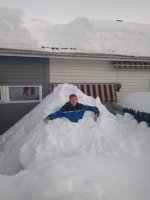 IMG_20180204_162203.jpg270.5 KB · Views: 68
IMG_20180204_162203.jpg270.5 KB · Views: 68 -
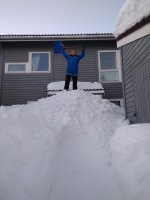 IMG_20180204_162816.jpg290.4 KB · Views: 63
IMG_20180204_162816.jpg290.4 KB · Views: 63 -
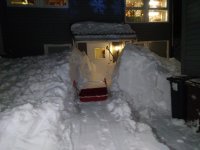 IMG_20180204_181623.jpg486.5 KB · Views: 70
IMG_20180204_181623.jpg486.5 KB · Views: 70 -
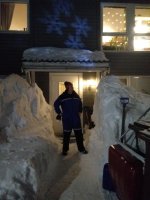 IMG_20180204_185725.jpg289 KB · Views: 74
IMG_20180204_185725.jpg289 KB · Views: 74
Did you see the youtube clip? Link just over the pictures/last bit of text on the post.^^
Here it is again:
Link to my short video
The view was quite good, almost tempted to make a platform to sit and drink beer on.
Here it is again:
Link to my short video
The view was quite good, almost tempted to make a platform to sit and drink beer on.
Last edited:
Did you see the youtube clip? Link just over the pictures/last bit of text on the post.^^
Here it is again:
Link to my short video
The view was quite good, almost tempted to make a platform to sit and drink beer on.
You need to take a page from us New Englanders and build yourselves steeper roofs (should probably be rooves but OED say that's outdated now!).
build yourselves steeper roofs
But what about santa and his sleigh?
Steeper rooves have more negative pressure (on the leeward side) when the wind blows. They are more likely to blow off.You need to take a page from us New Englanders and build yourselves steeper roofs (should probably be rooves but OED say that's outdated now!).
I'll just go on an all out protest against the English language and call the plural form of "roof" for "roofies" then ;-)
Some other houses here have steeper "roofies" (hahahah!), you see the ones on the row above mine have harder angles. Wind is not a huge issue here, but snowfall is, the "roofies" are built to spec ca 120cm of dry snow/80kg per square metre. March is normally one of the more "snow heavy" months, and I'm not gonna do it more than once per season. It is a lot of work. There was a variation beween 120-140cm up there before I took it down.
Maybe I should film the snow cave I dug out for my kids in the back yard next. Think there is enough room for 4 adults to sleep comfortably in there.
Some other houses here have steeper "roofies" (hahahah!), you see the ones on the row above mine have harder angles. Wind is not a huge issue here, but snowfall is, the "roofies" are built to spec ca 120cm of dry snow/80kg per square metre. March is normally one of the more "snow heavy" months, and I'm not gonna do it more than once per season. It is a lot of work. There was a variation beween 120-140cm up there before I took it down.
Maybe I should film the snow cave I dug out for my kids in the back yard next. Think there is enough room for 4 adults to sleep comfortably in there.
Four centuries of life in New England with a climate far harsher than the old country and nary a roof has blown off in the rare 100mph hurricane and the common fall/winter/spring Nor'Easters here on the coast.. Roofs (Rooves?) have collapsed on many an occasion here due to heavy snow loads. Steeper pitches do help..
We have these things called hurricane clips which have been required on new construction here for several decades to secure the roof to the wall framing.
The problem has been made somewhat worse because most houses around here (including our 110 yr old 'antique' which by British standards is a spring chicken) are now well insulated. The snow no longer melts off and once it gets over a foot or so deep it must be removed manually, which I can attest is not fun. Winter of 2015 we got > 9 feet (2.7 meters) here and we had to remove snow from the flat roof over over our porch to prevent its collapse. We also did any part of the main roof we could reach as ours is not that steep. (Something like a 30 degree pitch, we have a well insulated but unusable attic.) As an aside there were a lot of roof collapses here in MA, including the Boston area during the winter of 2015 which was exceptional in every way imaginable. The above ground portion of the subway did not run for more than a week at one point because they did not have the equipment to remove all of the snow.
This winter so far I think we are around the 12 inch mark locally (30cm) and I am hoping the worst is behind us, but it's early February and mother nature still has a few tricks up her sleeve.
We have these things called hurricane clips which have been required on new construction here for several decades to secure the roof to the wall framing.
The problem has been made somewhat worse because most houses around here (including our 110 yr old 'antique' which by British standards is a spring chicken) are now well insulated. The snow no longer melts off and once it gets over a foot or so deep it must be removed manually, which I can attest is not fun. Winter of 2015 we got > 9 feet (2.7 meters) here and we had to remove snow from the flat roof over over our porch to prevent its collapse. We also did any part of the main roof we could reach as ours is not that steep. (Something like a 30 degree pitch, we have a well insulated but unusable attic.) As an aside there were a lot of roof collapses here in MA, including the Boston area during the winter of 2015 which was exceptional in every way imaginable. The above ground portion of the subway did not run for more than a week at one point because they did not have the equipment to remove all of the snow.
This winter so far I think we are around the 12 inch mark locally (30cm) and I am hoping the worst is behind us, but it's early February and mother nature still has a few tricks up her sleeve.
Think my roof is 26.6 degrees, will have to check.
Really scary to walk around up there, started sliding a few times, slow and careful is the preferred approach. The tiles are double curve rough surface, made with the intent of keeping snow on the roof. The snow insulates and is usually no problem at all just laying about up there, but some times there is too much.
Really scary to walk around up there, started sliding a few times, slow and careful is the preferred approach. The tiles are double curve rough surface, made with the intent of keeping snow on the roof. The snow insulates and is usually no problem at all just laying about up there, but some times there is too much.
As a certified roofing inspector, I'd have expected Brother Cal to pipe in on least the spelling of the plural form 
Then there's one of the funner parts of the English language - punctuation and number of consonants in the contraction of the possessive on plural words ending in "s" - so if you have more than one roof to describe, would that be "roofs' " or "roofs's" ?
Then there's one of the funner parts of the English language - punctuation and number of consonants in the contraction of the possessive on plural words ending in "s" - so if you have more than one roof to describe, would that be "roofs' " or "roofs's" ?
I have also heard the term rooves used at times too.
When the loft is not insulater and there is a lot of snow it can slide off and take the gutters off as it goes off the edge. When the snow has gone the rain goes all over the place and makes the walls damp if you do not fix it.
2010 was the last winter we had enough for it to start slipping off.
I spotted one sliding off a couple of days after it had built up.
When the loft is not insulater and there is a lot of snow it can slide off and take the gutters off as it goes off the edge. When the snow has gone the rain goes all over the place and makes the walls damp if you do not fix it.
2010 was the last winter we had enough for it to start slipping off.
I spotted one sliding off a couple of days after it had built up.
Our eves extend out about 10 inches past the walls which helps in the event a gutter gets ripped off in a hurricane, which has happened here. (Helped by previous ice damage)
The biggest problem we have here and why it is important to keep the attic cold is that if heat from the house thaws the snow it runs down the roof to a colder portion and refreezes resulting in ice dams. Next melt the water backs up under the shingles and comes into the attic and through ceilings and down the inside of exterior walls - a very bad situation. You either need to keep the roof cold or keep all of it warm (difficult) to avoid the issue.
The biggest problem we have here and why it is important to keep the attic cold is that if heat from the house thaws the snow it runs down the roof to a colder portion and refreezes resulting in ice dams. Next melt the water backs up under the shingles and comes into the attic and through ceilings and down the inside of exterior walls - a very bad situation. You either need to keep the roof cold or keep all of it warm (difficult) to avoid the issue.
- Home
- Member Areas
- The Lounge
- The Weather
